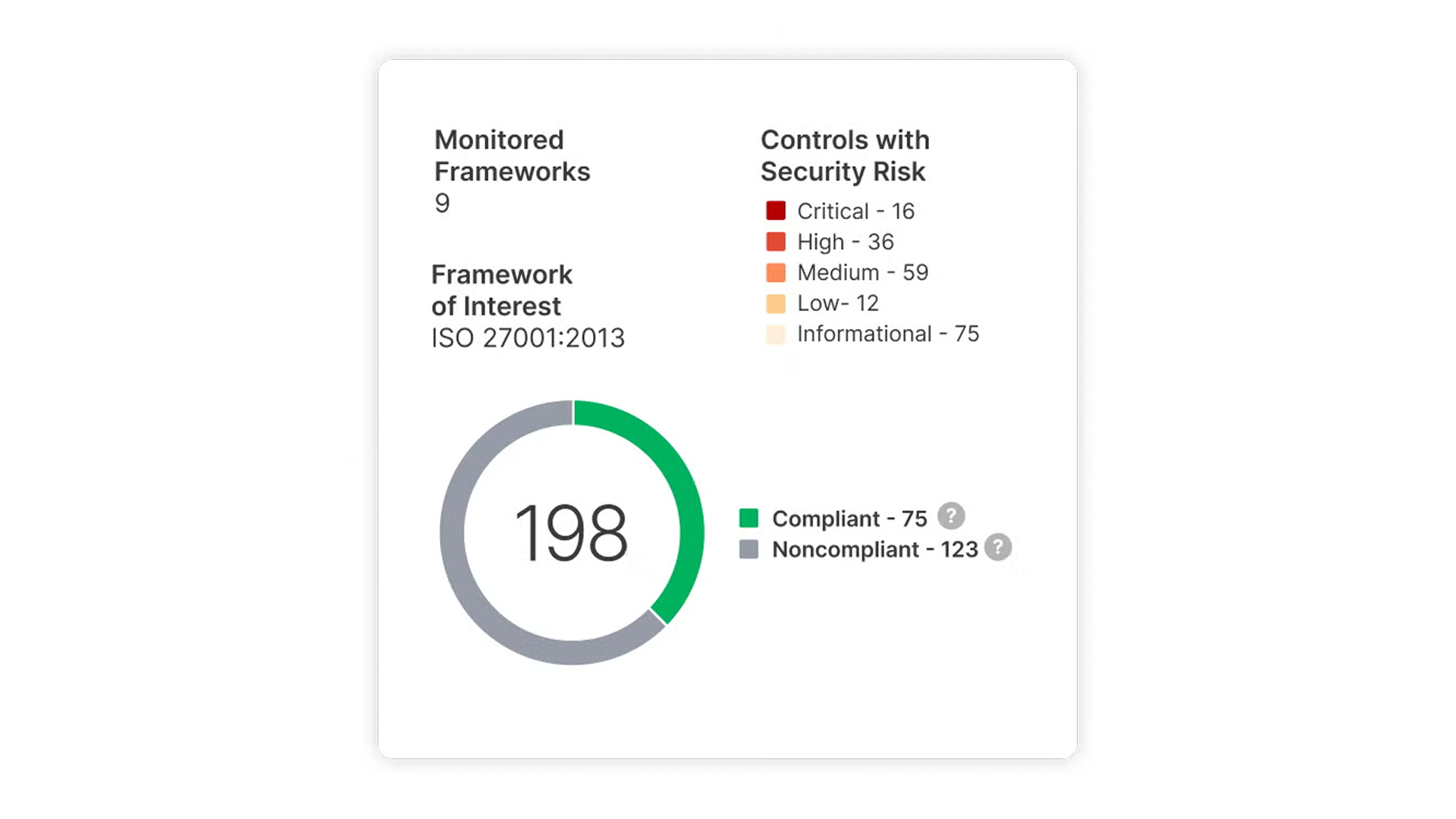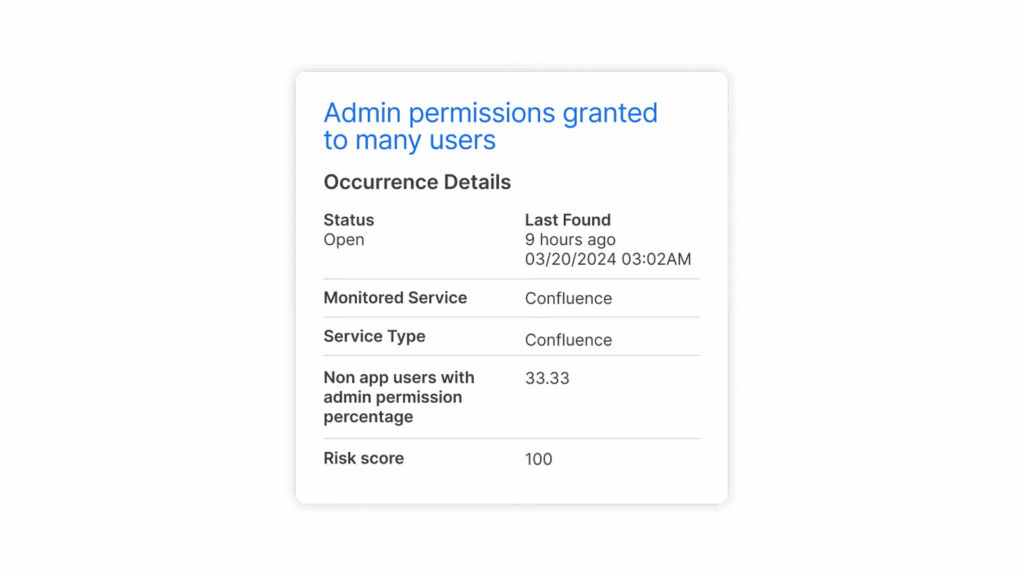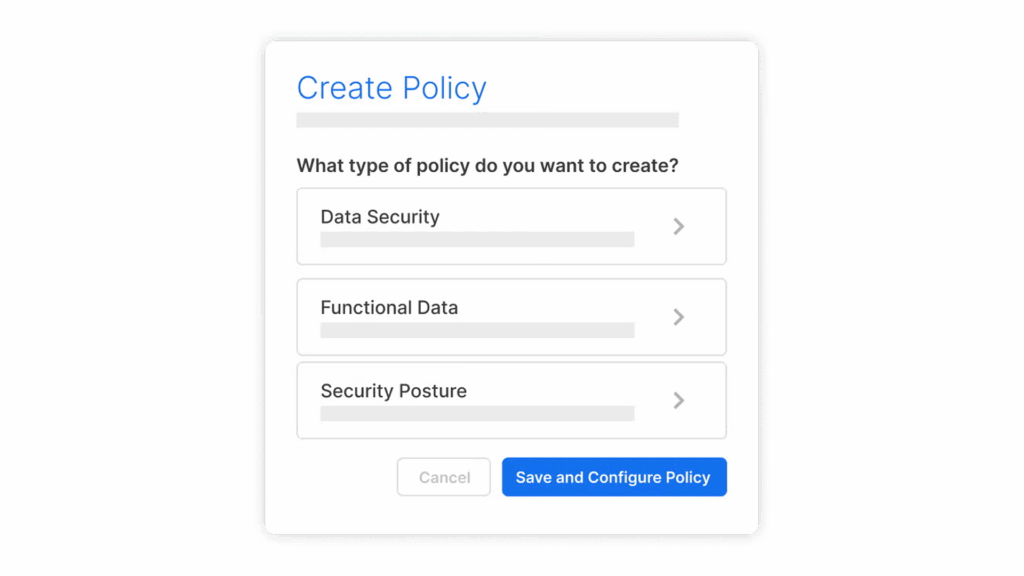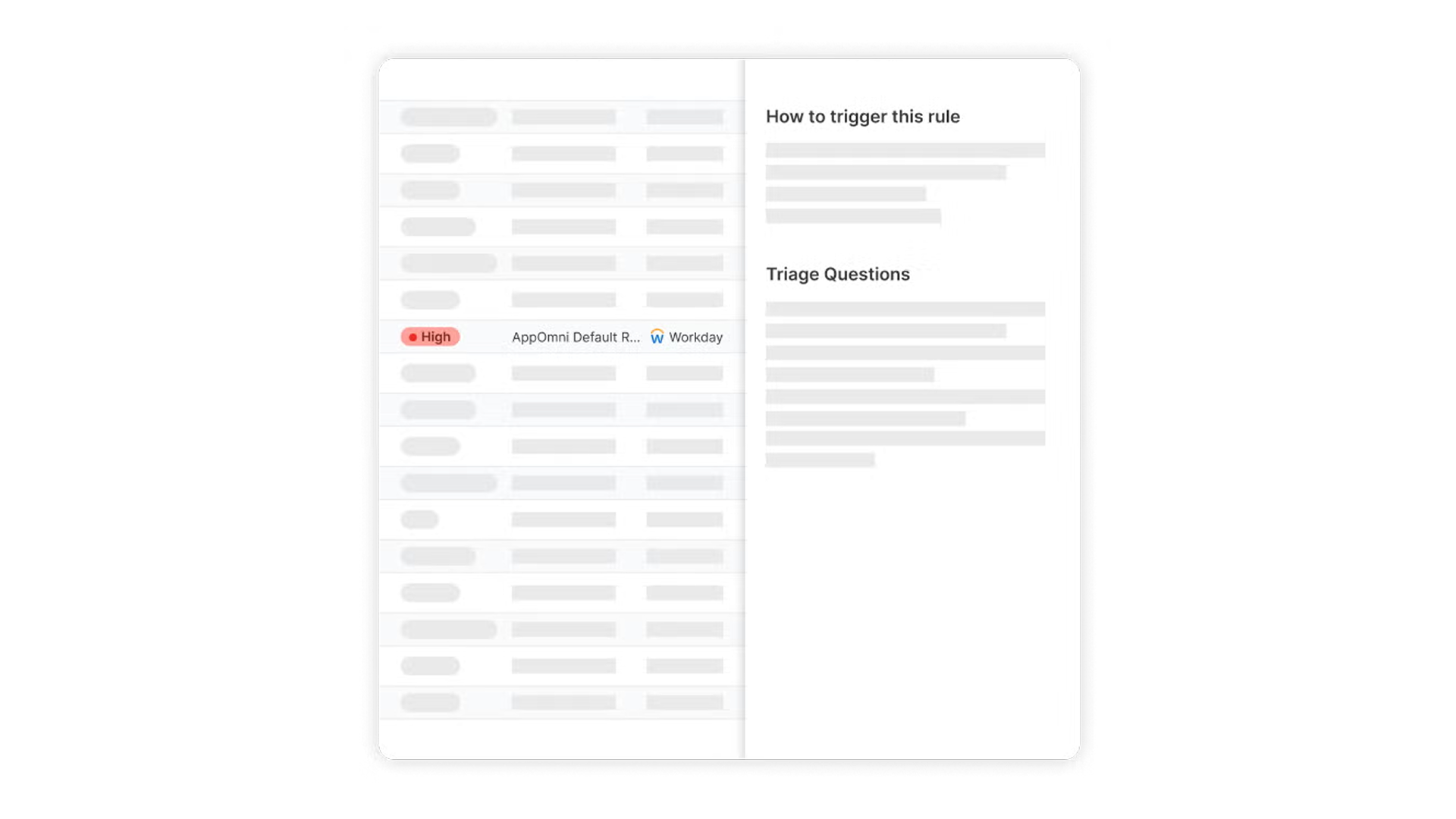Compliance for SaaS
Make SaaS compliance easy. Simplify, secure, and sustain standards.
CHALLENGE
SaaS applications rely on external integrations, access policies, and configurations which if set up incorrectly, can violate security and privacy laws. From HIPAA, Sarbanes-Oxley to SOC II, AppOmni ensures your SaaS applications align and comply with regulatory SaaS compliance standards.
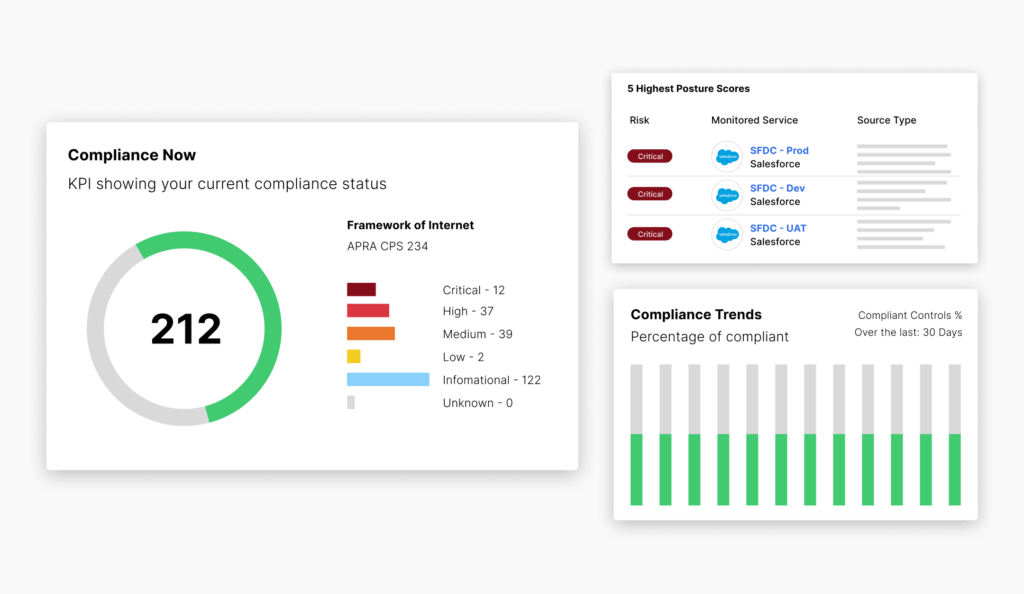
How AppOmni Compliance Secures SaaS
AppOmni enforces SaaS security controls, monitors for policy drift, and delivers audit-ready evidence to support compliance with standards like ISO, SOC 2, and HIPAA.
Detect SaaS Shadow IT
Detect unauthorized applications connected to your managed SaaS applications and gain insights into risks and incorrect user permissions.
Automation
Reduce tedious app by app validation of SaaS compliance checks. Use real-time insights and alerts to prevent potential violations and enhance overall SaaS security posture.
Identify, Prioritize & Remediate Misconfigurations
Utilize policy baselines or custom frameworks to alert on non-compliance. Ensure compliance using guided remediation steps.
Key Features
Supporting Federal SaaS Security and Resilience
AppOmni has been granted Federal Risk and Authorization Management Program (FedRAMP) Moderate Authority to Operate (ATO). Agencies can confidently adopt AppOmni’s SaaS Security Platform to secure their SaaS ecosystem, meet critical compliance requirements, and optimize data protection across multiple platforms.

Related Content
-

ServiceNow Agentic AI: What It Means for CISOs, SOC Analysts, SaaS Admins, and Developers
Agentic AI expands ServiceNow risk. Read why securing AI agents matters for CISOs, InfoSec, SOC, admins, and IT leaders.
-
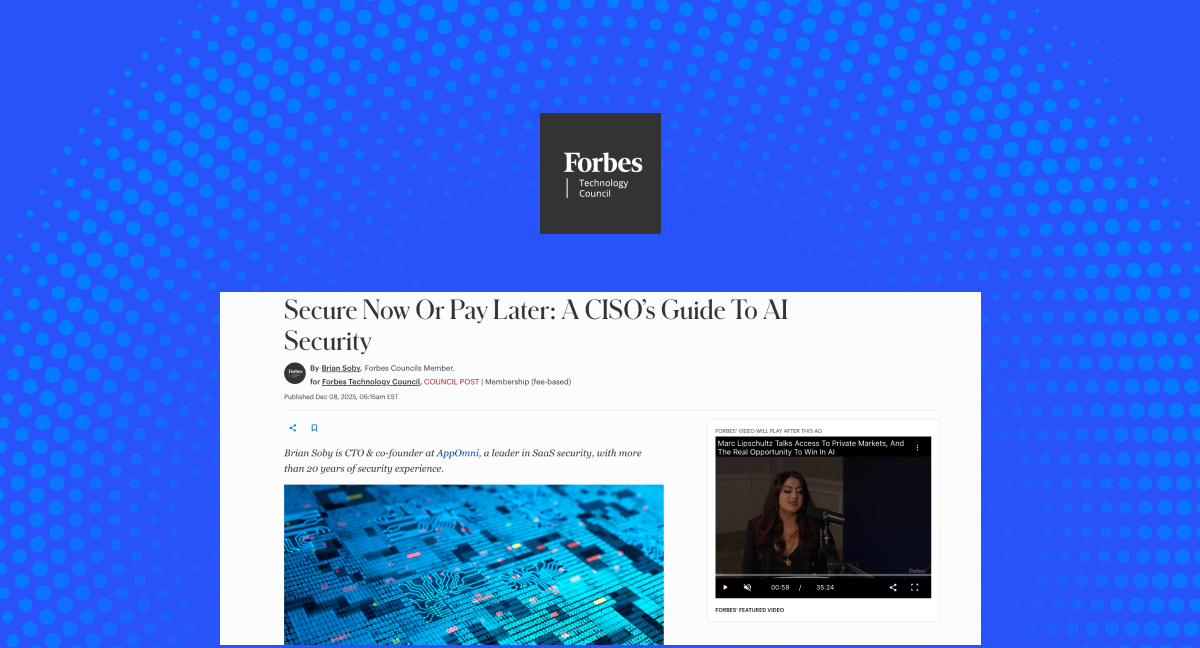
Secure Now Or Pay Later: A CISO’s Guide To AI Security
The same SSPM principles that guide SaaS protection also apply directly to AI. So, what steps can CISOs take now?
-

2026 in AI Ops presents opportunity, challenges
In 2026, IT pros should expect to see AI usage grow in importance, said AppOmni Director of AI Melissa Ruzzi, as automation and “self healing” become mainstream.
“I needed to get a better understanding of the overall attack surface, our portfolio of applications, and their configurations and data exposure risks.”
Wai Sheng Cheng
Information Security and Risk Manager, Spencer Fane

Cut compliance reporting time by 90%. What took days now takes minutes.
Centralize controls, map requirements, and prove compliance fast.
